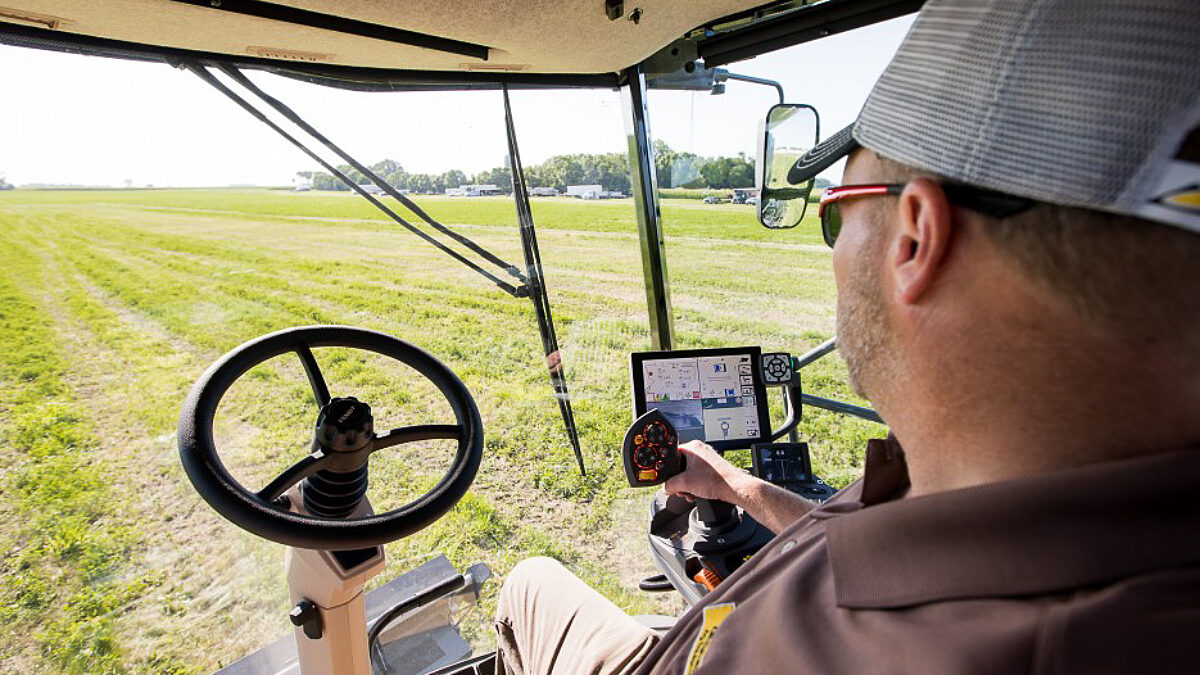Technology is Fostering an Ag Revolution
Guest Author
Special Contributor to FB.org

photo credit: AFBF Photo, Philip Gerlach
Guest Author
Special Contributor to FB.org
By Robert Giblin
An agricultural revolution is gearing up as a technological explosion is starting to energize nearly all facets of farming. Today, robots—aka agbots, agribots and farmbots—are taking on many farm tasks formerly done by humans, all while improving productivity and efficiency and reducing resources.
As part of an ever-increasing movement toward precision agriculture, robotics are spanning across nearly all types of farming—from grain crops, to fruit and vegetable production, to livestock and dairy.
Combined with sensing technologies and drones, robots can be used to perform numerous tasks, including delivering water, spraying insecticides or herbicides, weeding, tilling and planting fields, and harvesting crops … all with incredible accuracy.
While driverless cars get a lot of consumer attention these days, autonomous tractors are being developed as well. A report by IDTechEx, Agricultural Robots and Drones 2017-2027: Technologies, Markets, Players, said that more than 300,000 tractors with auto-steer or tractor guidance were sold in 2016, and predicted that more than 660,000 per year would be sold annually by 2026.
Some autonomous tractors don’t even have seats for drivers. They can be programmed by farmers to move along pre-determined routes, and the farmers can adjust the tractor’s movement remotely from a smart phone or tablet.
Autonomous tractors equipped with weed detection systems have demonstrated the ability to kill 90 percent of weeds on a field – even smashing or spraying weeds individually – and when carrying sprayers and interacting with drones, can cut herbicide-use by 75 percent.
Robots aren’t new to the dairy industry where they have been used extensively for several years. The IDTechEx report said the current $1.9 billion robotic milking parlor industry could grow to $8 billion by 2023.
Cows can approach milking robots when they feel like it. They step on a plate that initiates milking. The machine recognizes cows by their tags, and will disinfect the udder and attach suction cups to the cow’s teats. It also may be more comfortable for the cows, who can be trained to initiate their own milking. In some cases, a 20 to 25 percent per day increase in milk production is attributed to the increase in cow comfort. Sensors on the milking robots read critical information about each cow and associate it with a chip in an ear tag, and feed the data into management programs tracking the animal’s health, productivity and nutrition needs. Meanwhile, other mobile robots clean barns and feed cows.
There are still many challenges ahead, as robots move from the lab and factory to the field, where they will encounter many obstacles, such as changing light conditions; rain, snow and ice; mud and dust; rocks, and wind. Some technologies still need to be perfected. While robotic machines are being used to harvest some crops, such as apples and oranges, they may currently lack some of the subtleties—including personal judgment and human touch—necessary in harvesting more delicate fruits and vegetables.
Increasingly, teams of 4-H and FFA youth are participating in robotics challenges, and colleges and universities are integrating robotic, drone and other technologies into their curricula. The ag technology revolution is creating numerous new career opportunities for research, development, production and data management. It’s also fostering excitement in agriculture, and opening the doors to new ways of approaching sustainability goals.
Robert Giblin
Freelance writer
Robert Giblin writes, speaks and consults about agricultural and food industry issues, policies and trends.